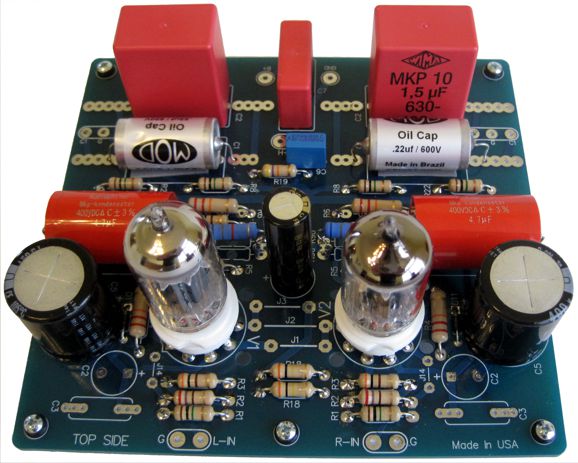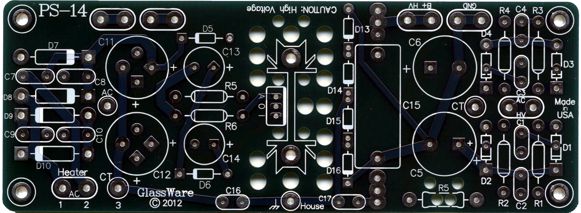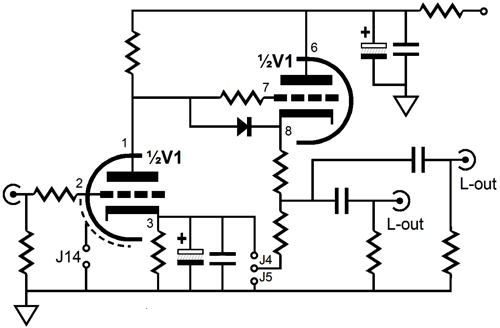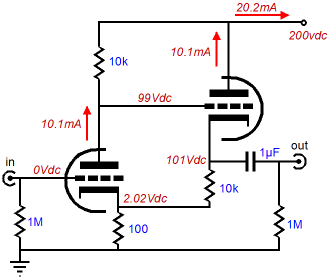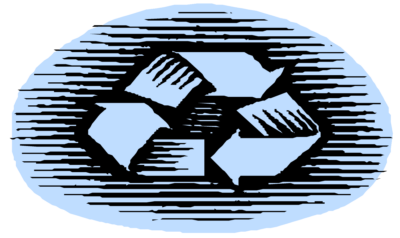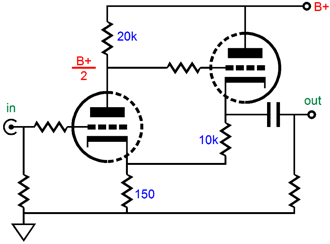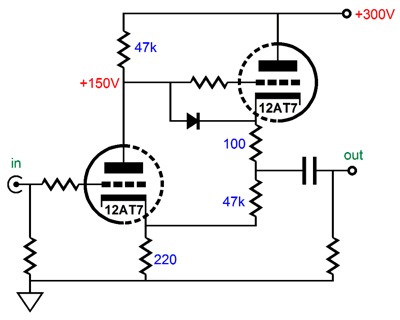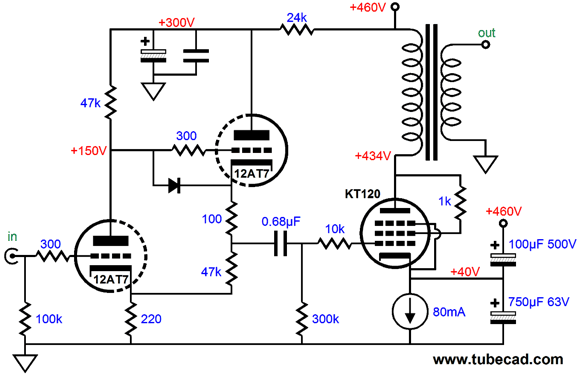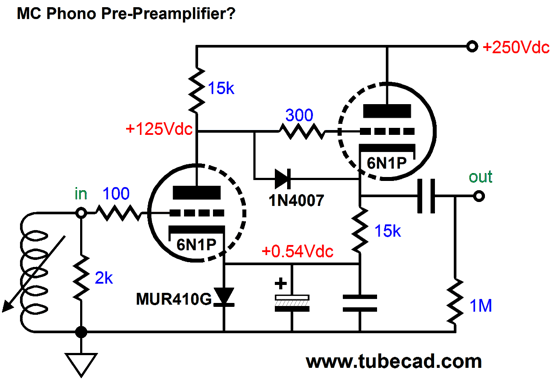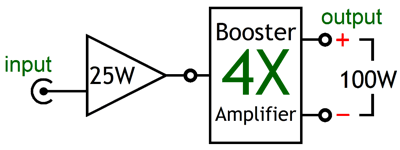| John Broskie's Guide to Tube Circuit Analysis & Design |
| 17 April 2013 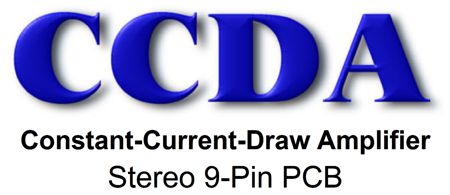
CCDA Noval Stereo PCBs
The new CCDA PCB is doubled-sided, with plated-through holes and silk-screened on both sides. This FR-4 PCB is extra thick, 0.094 inches (inserting and pulling tubes from their sockets won’t bend or break this board), with heavy 2oz copper traces. hold five mounting holes, which helps to prevent excessive PCB bending while inserting and pulling tubes from their sockets.
Each PCB holds two CCDA (constant-current-draw amplifier) line-stage amplifiers; thus, one board is all that is needed for stereo unbalanced use (or one board for one channel of balanced line-stage amplification). I have covered the CDDA topology many times before, so please read blog number 235 for more details. Nonetheless, the feature I like best is the ability to play with a limited amount of positive feedback.
Everybody loves positive feedback and hates negative feedback, right? Well, it gets complicated. Ayelet Fishbach of the University of Chicago discovered that often we do not want to hear positive feedback, just as we often welcome negative feedback. The following quote is from her paper, How Positive and Negative Feedback Motivate Goal Pursuit.
In other words, once you have bound yourself emotionally or intellectually to a course of action or project, you are irked by repeated and needless extolling's of your virtuous signing on; in contrast, you actually welcome negative feedback when your are stuck on some problem and you do not need added encouragement but information on where you went wrong. I fancy that there might be some Mars-Venus aspect to this as well, but I am too polite —or is it too cowardly— to state anything so untoward.
But in terms of electrical engineering, positive feedback is feared more than a request to take care of a friend's cat while she vacations or picking up the soldering iron from the wrong end. Why? Positive feedback is what makes oscillators oscillate and it can transform an amplifier into an oscillator. For example one big advantage that inverting amplifiers hold over non-inverting amplifiers is that their inverted output cannot be positively fed back to their inputs. In contrast, a non-inverting amplifier's output is in phase with its input, which means watch out if the output bleeds into the input, say via a direct connection or through induction. The higher the gain of a non-inverting amplifier, the greater is the danger. For example, a phono preamp's input and output jacks should be far apart, as the preamp's +60dB or +80dB gain at low frequencies can and must amplify the smallest signals. On the other hand, a wee bit of positive feedback is interesting. And I do mean a wee bit. For example in the last schematic , very little positive feedback obtains, as the gain with positive feedback is 23 and 15 without. Indeed if the input tube's cathode resistor were bypassed by a large capacitor, the gain would also be 23, so it can be argued that no positive feedback actually takes place. But if we alter the plate and cathode resistor values, as I have done in the following schematic, we can get some real positive feedback going and the circuit develops a gain of 30, which is a boost of +6dB.
Of course, just as too much negative feedback can cause instability, too much positive feedback will cause oscillation. So, moderation, as so often proves to be the case, is wise. But think about this: 99.999% of the electronically reproduced music that most of us have heard has come from amplifiers that are heavily laden with negative feedback, and only a few rare audiophiles have heard a feedback-free amplifier, and almost none have heard a positive-feedback amplifier.
CCDA Applications
The 12AT7's gain isn't enough to drive a negative feedback loop, but it is enough to drive the output tube to full power with less than 1Vpk of input signal.
Once again, we see my Aikido-esque single-ended amplifier noise-canceling scheme, which uses two capacitors at the output tube's cathode to inject a small portion of the power-supply noise into cathode, causing a large improvement in the output stage's PSRR. One crazy idea that I have been toying with is a pre-preamplifier for moving-coil phono cartridges. It's a crazy idea because super-low noise and tubes seldom go together. Nonetheless, the 6N1P is a wonderfully quiet tube and if you already owned a good tube-based phono stage that only yielded a gain of +40dB, then something like the following just might work.
The CCDA would be configured in the positive-feedback configuration, but no positive feedback would be forthcoming; instead, the positive feedback setup would create a constant-current flow through the MUR410G rectifier, which is used to cathode-bias the input triode. And if the rectifier sees a constant current flow, its two shunting capacitors would have much less work to do and could do much less harm as a result. With two rectifiers in series, less current would flow, which would allow a larger plate resistor to be used, which in turn would create a bit more gain. But as tit stands now, the gain will be about 24 (or +27.6dB), which is plenty; more importantly, the higher current results in lower noise.
PCBs and Part Kits
Next Time
//JRB |
I know that some readers wish to avoid Patreon, so here is a PayPal button instead. Thanks.
John Broskie
Kit User Guide PDFs
E-mail from GlassWare Customers
High-quality, double-sided, extra thick, 2-oz traces, plated-through holes, dual sets of resistor pads and pads for two coupling capacitors. Stereo and mono, octal and 9-pin printed circuit boards available.  Aikido PCBs for as little as $24 http://glass-ware.stores.yahoo.net/
Support the Tube CAD Journal & get an extremely powerful push-pull tube-amplifier simulator for TCJ Push-Pull Calculator
TCJ PPC Version 2 Improvements Rebuilt simulation engine *User definable
Download or CD ROM For more information, please visit our Web site : To purchase, please visit our Yahoo Store: |
|||
| www.tubecad.com Copyright © 1999-2013 GlassWare All Rights Reserved |
